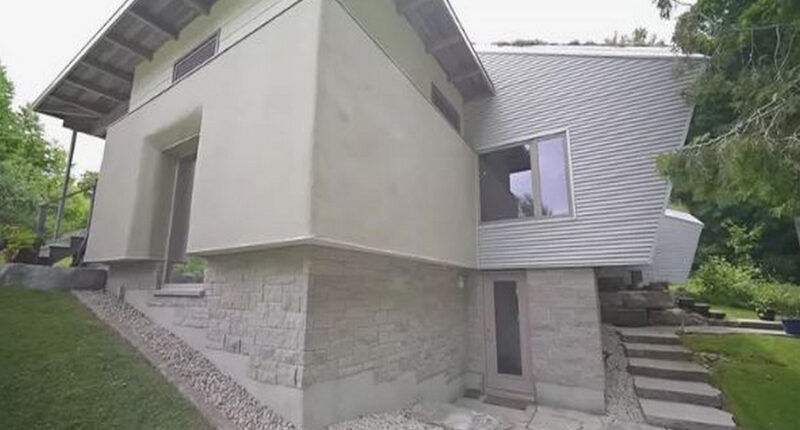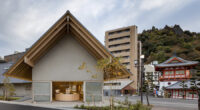In the pursuit of sustainable living, modern technology often takes center stage. However, sometimes the most effective solutions lie in returning to traditional building methods like rammed earth or straw bale construction. These low-tech approaches may require more time and effort but offer significant energy savings, especially when utilizing local materials.
An Off-Grid Oasis in Ontario
Nestled in Minto, Ontario, is a remarkable straw bale homestead that operates entirely off the grid, serving as a testament to sustainable living principles. Owned by Chris Vander Hout, Christine Hoy, and their son, this eco-conscious dwelling sits on a 20-acre property where the family endeavors to live harmoniously with nature. Their lifestyle revolves around solar energy, rainwater harvesting, and organic food cultivation.

The Sustainable Design
Designed by Martin Liefhebber of Breathe Architects and built by Harvest Homes and Evolve Builders, the straw bale residence boasts a plethora of sustainable features. These include a green roof, natural finishes, solar panels, rainwater collection system, and a composting toilet. By incorporating these elements, the homeowners minimize their ecological footprint while maximizing self-sufficiency.
Harnessing Natural Resources
Positioned within an existing clearing and oriented towards the south, the home capitalizes on passive solar heating during winter while benefiting from natural cooling in the summer. The green roof, adorned with drought-resistant plants, mitigates rainwater runoff and provides insulation against extreme temperatures.
Thoughtful Design Integration
Central to the home’s layout is a greenhouse that passively captures solar heat, distributing it to surrounding living spaces. Additionally, greywater from household activities is filtered through planters, nourishing an interior garden. The interior spaces are divided into sleeping pods and a living pod, featuring a wood stove for supplementary heating and a post-and-beam structure crafted from sustainable lumber.
Embracing Natural Materials
The choice of materials reflects the homeowners’ commitment to environmental stewardship. Natural wood, clay finishes, and earthen floors contribute to superior indoor air quality and minimize off-gassing. Moreover, radiant heating is provided by a wood-gasification boiler fueled by sustainably harvested firewood.

Water Conservation and Recycling
Water conservation is prioritized through a dug well water supply and a vault-style composting toilet. Greywater from household use is recycled for garden irrigation, further reducing water consumption and eliminating the need for a conventional septic system.
A Testament to Sustainable Living
The straw bale homestead stands as a testament to the dedication and patience invested in its construction. With innovative sustainable design solutions seamlessly integrated, it serves as a model for self-sustaining living. Through the careful alignment of natural resources and thoughtful design, the family has created an eco-friendly oasis that exemplifies the potential of off-grid living.











